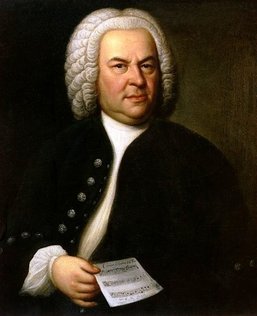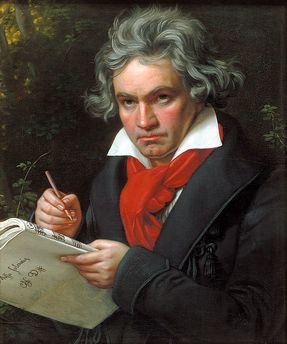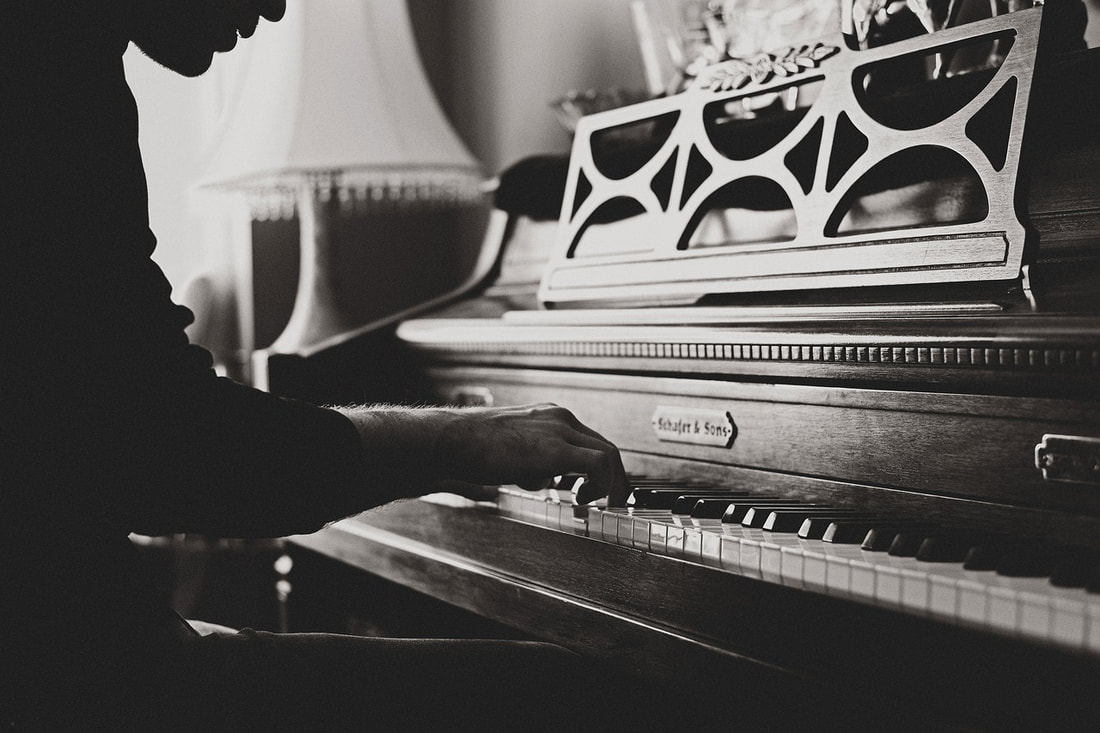|
Music has been a part of human culture throughout the ages, with some evidence suggesting that mankind has been creating songs for more than 50,000 years. Since then, it has evolved to become a crucial part of numerous societies. To explore the role that music has played in human history, check out the following facts about the songs, instruments, and musicians of the ancient world: 1. The oldest-known piece of music is called “Hurrian Hymn No. 6.”“Hurrian Hymn No. 6” is the oldest melody to be discovered in its entirety, with an estimated composition date sometime between 1400 and 1300 BC. Etched into a Sumerian clay tablet found in Syria in the 1950s, the melody, written for a 9-string lyre, honors the fruit and fertility goddess Nikkal. The oldest full musical composition—consisting of a melody with lyrics—is a 2,000-year-old song entitled “Seikilos Epitaph.” This song was engraved on a marble column that served as a gravesite marker in Turkey, and includes the lyrics “While you live, shine / Have no grief at all / Life exists only for a short while / And time demands its toll,” according to an article on History.com. 2. The world’s first instruments include flutes and drums.In Germany in the early 2010s, archaeologists discovered flutes carved from mammoth ivory and bird bones, which scientists estimate to be more than 40,000 years old. Though researchers cannot say with surety what people used the instruments for, they speculate that the bone flutes were used in either religious rituals or for recreational purposes. The next-oldest instruments ever found are drums, some of which date back to 6000 BC. Formed by animal skin membranes stretched tight across a shell made from objects like gourds and wood, drums of different designs and sizes have been discovered in the ruins of ancient societies located in places like Egypt, Iraq, and Turkey. 3. Ancient Greeks used music both recreationally and academically.Music was a cornerstone of life in ancient Greece, and people played it on all kinds of occasions, from the celebratory, to the everyday, to the somber. It served as a way to entertain guests at weddings and social gatherings and to console the grieving at funerals. It was even played on a regular basis for workers undertaking their daily tasks in an effort to make labor more tolerable. The ancient Greeks’ believed that music had a divine quality that promoted healing and allowed people to relax, but they also saw music as an academic tool. Music was one of four elements of mathematics education in Ancient Greece because of the role that ratios play in the relationship between melody and harmony. Thus, they considered music to be less of an art and more of a quantitative science. 4. Some cultures still play ancient instruments today.A number of modern musicians still play instruments that originated thousands of years ago in places like China, Australia, and many Middle Eastern countries. In China, people carry on the tradition of playing the guqin, a plucked instrument with seven strings strung across a long, narrow board. Some claim that the Chinese philosopher Confucius played the guqin, because he considered music to be a crucial part of maintaining a clear heart and mind. In countries like Azerbaijan, Turkey, Greece, and Tajikistan, musicians still play a large frame drum known as a daf. The daf has a hardwood frame covered by a membrane, which is often made of goatskin. Played by the hand, the dafa is sometimes equipped with small metal ringlets around the interior to produce a tambourine-like sound. In Australia, aboriginal peoples still play a long flute known as a didgeridoo, which is formed from local hardwoods. These instruments tend to be between 3 and 10 feet long, and are played by vibrating one’s lips continuously through a large mouth opening at the top while tapping out patterns along the side. 5. You can hear recreated ancient music on the Internet.In 2013, a researcher from Oxford University claimed that he was able to accurately reconstruct the sound of the lyrics and melody of the “Seiklos Epitaph” through new findings about ancient Greek vocal notations. To play the song as it was originally meant to be heard, he used an instrument known as a canon, which has eight strings and is similar to a zither. That song can be heard here. Many people have also attempted to recreate “Hurrian Hymn No. 6” using a variety of instruments, including different forms of lyres that may be similar to those used at the time the song that was written. Several different versions of “Hurrian Hymn No. 6” can be found here.
Apart from listening to an album, one of the most enjoyable ways to appreciate music is to learn about it through inspiring documentaries. In the last two decades, the film industry has produced a collection of unforgettable documentaries centered on musical evolution and individual musicians alike. Try watching any of the eight works listed below. 1. 20 Feet from StardomThis Academy Award-winning film, directed by music documentarian Morgan Neville, focuses on the careers of the backup singers who loaned their voices to some of the most beloved songs of the 20th century. Featuring interviews with stars like Bruce Springsteen, Stevie Wonder, Sheryl Crow, and Sting, 20 Feet from Stardom explores the professional triumphs and disappointments of the many backup singers who helped shape the sound of American pop music. From successful stars like Darlene Love, to lesser-known artists like Lisa Fisher and Merry Clayton, music fans of all generations will appreciate the power behind these women’s stories. 2. Searching for Sugar ManAnother Oscar winner, Searching for Sugar Man tells the tale of singer-songwriter Sixto Rodriguez. The film details his brief professional ties to a Motown record label in the 1960s before he gave up his music career in the subsequent decade to perform manual labor and provide for his family. What makes this story worthy of a documentary is the surprising revelation that Rodriguez’s music rose to iconic status a world away in the country of South Africa, unbeknownst to him, more than four decades later. Directed by Malik Bendjelloul, Searching for Sugar Man is an incredible true story that incorporates elements of music, dreams, and mystery, all wrapped up with a modern-day fairytale ending. 3. Sound CitySound City was directed by Foo Fighters front man and former Nirvana drummer Dave Grohl. The title of the documentary pays homage to the name of a now-shuttered recording studio in Los Angeles, California, where some of the most iconic albums of the last 50 years were recorded. Broken down into what can loosely be described as three acts, the film tells the soulful story of Sound City’s rise and fall, supplemented with stories and interviews from many of the classic artists who recorded there. Musicians who make an appearance in Sound City include Stevie Knicks, Lindsey Buckingham, and Mick Fleetwood of the band Fleetwood Mac as well as Tom Petty, Rick Springfield, Neil Young, and Paul McCartney. 4. Muscle ShoalsMuscle Shoals is a film about the way that a distinct style of 1960s and 70s music evolved in a small town in the Deep South. Over the course of an hour and 51 minutes, first-time director Greg ‘Freddy’ Camalier gives viewers an insight into the creative atmosphere of Muscle Shoals, Alabama that inspired the creation of such classic hits as “When a Man Loves a Woman,” “Freebird,” and “Mustang Sally.” The story is supported by interviews from music legends like Aretha Franklin, Mick Jagger, Percy Sledge, and Bono. 5. What Happened, Miss Simone?Released in 2015, What Happened, Miss Simone? details the life and musical career of jazz, blues, and soul musician Nina Simone, whose talent and passion for music was rivaled in scope only by her commitment to the Civil Rights Movement. Director Liz Garbus takes the audience from Simone’s earliest years as a classically trained pianist through her eventual voluntary retirement from the entertainment industry. Throughout the film, friends and family of the “high priestess of soul” give interviews to help viewers understand Simone as both an artist and an activist. 6. AmyYet another music documentary that earned an Academy Award, Amy is a film directed by Asif Kapadia. It follows the musical growth of renowned singer-songwriter Amy Winehouse, who passed away in 2011 at the age of 27. Through interviews with friends and home video footage of the artist herself, Amy focuses on the story of a musician with larger-than-life talent who struggled under the pressures of worldwide fame. 7. Runnin’ Down a DreamSince he first formed the band Tom Petty and the Heartbreakers in the mid-1970s, Tom Petty has consistently written and performed music that continues to inspire new generations. Runnin’ Down a Dream paints a picture of the successes, troubles, and times of one of America’s great classic rock and roll bands. The film, directed by Peter Bogandovich, premiered during the closing weekend of the New York Film Festival in 2007. It received high reviews across the board from major sources such as the New York Times, Rotten Tomatoes, and Variety Magazine. 8. The Beatles: Eight Days a WeekThe Beatles: Eight Days a Week, directed by visionary filmmaker Ron Howard, focuses on the story of one of the most influential rock and roll bands of all time. Instead of building a story solely on the major events that occurred during the Beatles’ unprecedented rise to stardom, Howard chooses to fill the documentary with the more nuanced details of the band’s touring life between 1962 and 1966.
The film’s narrative is buoyed by footage and archival interviews with the members of the band. Additionally, it never loses sight of the joy that all four musicians found in making music amid the cultural frenzy that took them farther than any band had gone before. While new musicians often learn to play instruments through lessons and independent practice time, one of the most exciting ways for a musician to improve his or her abilities is by practicing alongside other players during a jam session. These informal gatherings allow a group of people to gather together and create music in a relaxed setting, where improvisation is encouraged, creativity is developed, and new skills can be learned. To put together a jam session that is enjoyable, low key, and productive for everyone involved, musicians should avoid making the following mistakes during the process. 1. Playing with musicians who don’t share your goals. When it comes to playing with other musicians, the benefit for beginners is that jam sessions can only improve their skills, even if they are among people with far more experience in practicing an instrument. A beginner does not lose out by working with people who are far more advanced in the practice than he or she is, and it’s almost never too early for a new musician to participate in a jam session. The most important thing that musicians need to remember when choosing people to jam with is that everyone involved should be upfront about their level of skill and their goals for the session before getting together. A relatively inexperienced player who is looking for someone to casually play with for practice and recreation should not agree to pair up with an experienced player who wants to form a band with someone at the same level of ability. Prior to setting up a session, all musicians should be clear about their experience and what they wish to gain from jamming with others. Direct communication allows musicians to find a group of people with whom they have musical goals in common and keeps group members from getting frustrated while practicing together. 2. Committing to something you can’t follow through on.Musicians who agree to take part in a jam session need to be prepared to follow through on the commitment. Reliability is important when practicing with others. This is because jam sessions require everyone involved to coordinate schedules and decide on mutually convenient block of time to get together. Apart from committing to showing up, all musicians should arrive at the session prepared and ready to give the practice full effort. Being prepared means bringing any necessary gear and having all instruments tuned and ready to go. This prevents delays that cut into practice time. In addition to arriving on time and ready to play, all musicians should focus on paying close attention to what is going on during the session, even when it isn’t their turn to solo. A player who gives the meeting all of his or her focus will have a more enriching experience. Additionally, this also shows respect and consideration for other members of the group. 3. Being unwilling to play unfamiliar songs.  Another important way to show consideration for other musicians during a jam session is to be amenable to playing songs that one has not played before. Every player in the group should arrive at the session with songs in mind that he or she would like to practice. However, everyone must also be prepared to play along to songs that other group members choose. Inexperienced musicians may feel averse to playing unfamiliar songs out of fear that they lack the ability to improvise, but those who find themselves in this mindset should instead elect to see the situation as a learning opportunity. Less experienced players should follow along with unfamiliar tunes as best they can. They may also choose to play along quietly until they become accustomed to the structure of the song. Musicians should also be comfortable asking for guidance from other group members as needed. 4. Not taking cues from other musicians.As stated previously, being considerate and respectful to the other musicians is crucial to having a productive jam session. Taking cues from other members of the group is a key part of that process. Those who are jamming with other musicians should avoid becoming so focused on their own playing that they lose sight of what everyone else is doing during a song.
One of the most common mistakes that inexperienced players make during jam sessions is playing solos for too long, or having an instrument’s volume turned up so high that it drowns out everyone else. These things can be avoided if a player recognizes that a jam session is a collaborative effort meant to give everyone a chance to play, and is not a place where one person is meant to shine above the rest. A player should take cues from other musicians during a song to determine when to play and for how long. This can be achieved through regular eye contact during the performance, and by paying attention to other players’ body language. The musician who knows how to take cues from others is always a welcome addition to a jam session because he or she helps create free-flowing music that allows for everyone to take part equally. While many people around the world will take music lessons at some point, far fewer pursue an instrument to the point of becoming highly proficient. Those who do choose to make music a significant part of their lives work hard to the meet their goal. Here are eight habits proficient musicians don’t do. 1. They don’t get discouraged easilyLearning to play a new instrument can leave people feeling frustrated when progress seems slow or a piece of music is particularly complicated. However, people who become proficient musicians always find a way to push through the difficulties that often accompany the process of mastering an instrument. Great musicians recognize that playing well requires determination, and they don’t give up on the art form when they encounter adversity, choosing instead to see it as an opportunity for growth. 2. They aren’t lazy about their approach to learning musicPeople who become great musicians know that proficiency does not come without hard work, and they don’t expect to find a shortcut to greatness. Proficient musicians recognize that plenty of practice is the only way that they can learn to play an instrument well, and they are purposeful when they go about it. To become a talented musician, great players set realistic, achievable goals for their practice sessions rather than lazily running through scales or idly playing through whole songs. 3. They don’t hate to practiceIn addition to practicing often and purposefully, the best musicians also find enjoyment in the process of practice. For great musicians, practice isn’t seen as a chore or merely another task to be completed, but instead as a positive, personal time that they are dedicating to an activity that they like. To be a truly brilliant player, a person must genuinely love the art of music, which makes practice less of a forced task and more of a pleasant, therapeutic one. 4. They don’t forget the importance of humilityNo matter how proficient great musicians become, they remember that there are always new things that they can learn from others. The best musicians recognize and respect that other musicians may have something to teach them, and they remain open to gaining new skills from players who are more experienced than they are or who play in a style that is different from their own. Humility is a crucial part of being a great musician, and those who remain humble about their abilities allow themselves to be open to the development of a more diverse set of musical skills. 5. They don’t see high-quality instruments as a wasteful investmentWhile beginning musicians can start out by practicing with an instrument of generic quality, musicians who become highly proficient recognize the benefits of investing in a high-quality instrument. Instruments that meet high standards hold tune better, are easier to play, and produce better sounds than their cheaper counterparts. Owning a quality instrument also allows a musician to perform to the best of his or her ability. Additionally, great musicians dedicate effort into the care and keeping of their instruments in order to keep them in prime playing condition. 6. They don’t try to replicate what others are doingGreat musicians don’t aspire to play exactly like everyone else. Instead, they develop their abilities well enough to discover their own unique style and aim to set themselves apart from others. Combining skill and creativity can yield the kind of music that people are enthusiastic about, and it allows a musician to take his or her work from uniformly good to outstanding. 7. They don’t take criticism personallyTo be a great musician, one must have a thick skin. The best players do not take constructive criticism personally and find value in the opinions and advice of professionals. Musicians who cannot handle criticism are limited to their own subjective view of their abilities, and will never be able to see their music from a well-rounded perspective. Rejecting constructive criticism can prevent musicians from improving their craft, something that the greatest players always strive to do. 8. They don’t take bad advice to heartJust as important as knowing when to listen to criticism is knowing when to ignore it. While some suggestions will have merit and allow a good musician to become even better, others rooted in personal opinions will do nothing to improve a musician’s abilities. Great musicians are masters of separating the good advice from the bad and ignoring critics who want to tear them down rather than build them up. The world would be missing the music of some of history’s most beloved performers if those who were rejected for their style, like Elvis Presley, Lady Gaga, and the Beatles, had simply given up.
Although the popularity of classical music has declined among the general population in recent generations, its profound influence on all genres of modern music is undeniable. In fact, much of today’s music incorporates stylistic elements of composers who broke barriers and set musical trends far ahead of their time. To better understand the impact of classical music, music fans should learn about the following four men considered to be among the most timeless and influential composers in history, along with the contributions they made that drove the progression of music forward: 1. Johann Sebastian Bach Bach | Wikipedia Bach | Wikipedia A German composer in the baroque style, J. S. Bach was known in his own time for his abilities as a harpsichordist, an organist, and as an organ repair specialist. Today, however, he is considered by many to be the greatest composer of all time. Though his contemporaries considered his pieces to be slightly outdated, later composers such as Haydn, Mozart, Beethoven, Mahler, and Schumann acknowledged his genius and drew inspiration from his work. Part of J. S. Bach’s fame is due to his profound exploration of the baroque style. His compositions incorporated more notes, deeper harmonies, and more advanced technical command than any composer up to that point. He was also very prolific, writing more than 1100 works. His best-known pieces include Toccata and Fugue in D Minor, Arioso, and the Brandenburg Concertos. 2. Wolfgang Amadeus Mozart  Mozart | Wikipedia Mozart | Wikipedia Mozart was an Austrian child prodigy who began studying music at age 3. By age 6, he was composing his own pieces on the harpsicord and touring to perform them around Europe. In addition to the harpsicord, the young Mozart played the organ, viola, and piano. He was famous in his own time for the dramatic complexity of his work as well as his mastery of every musical style, including symphony, concerto, chamber music, and opera. Like Bach, Mozart stretched the limits of the musical style of his time and brought enriched melodies, harmonic clarity, and perfect form to the art in a way that no previous composer had. In his operas especially, Mozart was able to conjure a depth of emotion in music using elements like tension and shifting key centers. Of his more than 600 works, some of his most famous are Requiem, Symphony No. 40, and the opera The Magic Flute. 3. Ludwig van Beethoven  Beethoven | Wikipedia Beethoven | Wikipedia The compositions of Ludwig van Beethoven mark a turning point in the classical style. In his work, Beethoven expressed a fierce originality and wrote music that met his own standards, rather than those of patrons, wealthy courts, or religious entities. His pieces pushed through boundaries set by standard classical form and played a significant role in ushering in the new age of romantic classical music, which was powerfully emotional and rejected the rigid orderliness of earlier iterations within the genre. His greatness is amplified by the fact that he continued to compose music despite a condition that caused his hearing to deteriorate drastically during the last three decades of his life. Beethoven created lengthy compositions that were louder and more dramatic than anything previously written. His piano concertos and sonatas, for example, broke new ground, taking full advantage of the instrument’s newly expanded keyboard. His works include some of the most iconic classical music of all time, including the Fifth Symphony, Sonata No. 14 (known as Moonlight Sonata), and Bagatelle No. 25 (known as Für Elise). 4. Frederic Chopin Chopin | Wikipedia Chopin | Wikipedia Born in the early 19th century to a middle-class family in Poland, Frederic Chopin demonstrated his virtuosity early, playing piano adeptly without any formal lessons as a child. When he composed and published his first piece at the age of 7, he drew comparisons to Mozart and would later receive private music lessons from Polish composer Joseph Elsner before attending the instructor’s Warsaw Conservatory. There, Elsner encouraged Chopin to reject traditional playing patterns in favor of pursuing his own original style. Unlike the composers mentioned above, Chopin was singularly devoted to the pursuit of piano, and while he created the majority of his works for solo piano, he also created a number of concertos and sonatas. His legendary improvisational style was simultaneously tender and frantic, with his feet appearing to constantly be in motion while playing. In fact, he is credited with the first consistent use of half and quarter pedaling. Chopin’s complex harmonic methods and poignantly reflective melodies influenced many late 19th- and 20th-century composers. Some of his most famous works are Nocturne in E-flat major, Funeral March (also known as Prelude in C minor), and Revolutionary Etude. |
Photo used under Creative Commons from Marina K Caprara



 RSS Feed
RSS Feed
